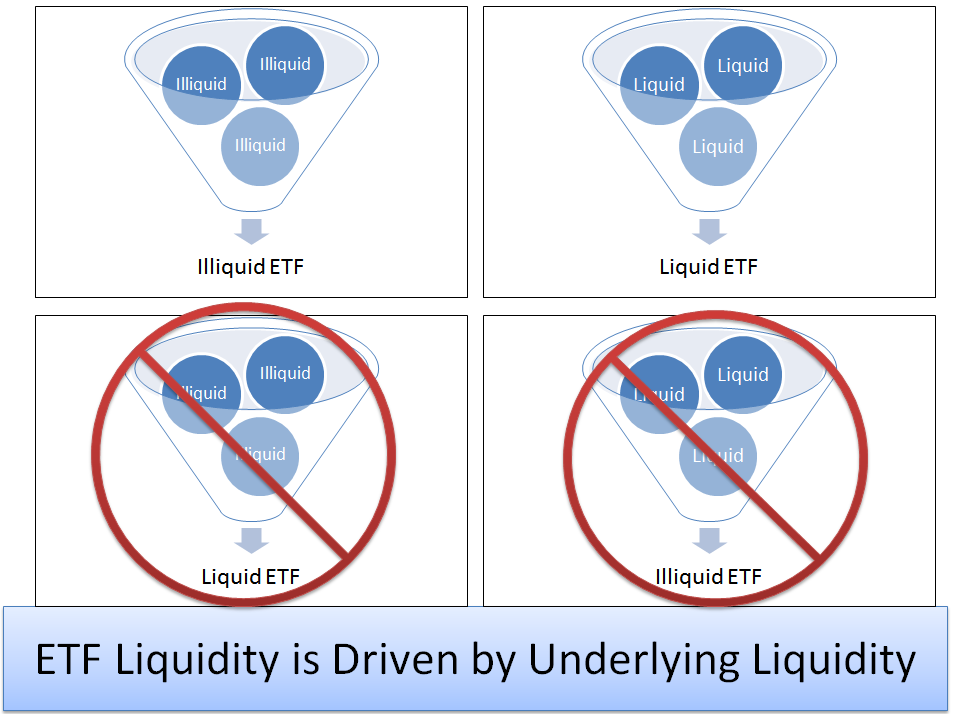3 Ways You d Never Think Of To Profit From ETFs
Post on: 31 Май, 2015 No Comment

Sometimes, investing can be so boring .
Even ETFs. which used to be the Brave New World of investing. have become mainstream. Index ETFs. as well as some slightly exotic ETFs. such as those that expose you to commodities, are fairly accepted now.
But what if you could kick it up a notch? What if you could see the potential for dramatic growth? If you have the interest — and the risk tolerance — you can invest in some slightly crazy ETFs.
Inverse ETFs
For those who are more interested in hedging their portfolios against falling prices, inverse ETFs can be the way to go. These ETFs are put together as a way to help investors profit from declining values. When the underlying benchmark of the ETF declines, you profit .
The main advantage to an inverse ETF is that you can avoid the necessity of a margin account. For the most part, if you want to enter a short position, you need to leverage yourself with a margin account at a brokerage. An inverse ETF makes it easy to short an index. including broad market indexes, without trouble.
Inverse ETFs are more appropriate for advanced traders who understand the risks associated with trying to make money through shorting. An inverse ETF is not for the buy-and-hold investor, since you might need to sell fairly quickly.
ETFs Of ETFs
Say what?
Yes, there are ETFs that draw from other ETFs. This can result in more bang for your buck in some cases, allowing you to take advantage of several attractive ETFs by trading the shares of one.
However, be on the lookout before you choose these. Look at the underlying assets of the underlying ETFs to make sure you aren’t getting something you don’t want. Also, there might be compounded fees. You might pay expense ratios on the underlying ETFs, as well as on the main ETF that you purchase. Make sure these fees aren’t eroding your returns.
Futures-Based Commodity ETFs
It’s important to understand that these ETFs are investing in futures and swaps. These investments are based on agreements to pay certain prices for commodities, whether it’s now (swaps) or later (futures). Investing in them directly can be complex, but an ETF can simplify the process.
However, there’s a potential issue with a futures-based commodity ETF — contango.
In a contango situation, the near-month futures have lower prices than the futures that expire later. Essentially, you sell at the near-month futures price (low) and roll over to buy the futures further out (high).
Even commodity ETFs that aren’t futures-based can exhibit a degree of contango. since the commodity spot prices might be out of sync with what’s happening with the ETF .
What About Exchange-Traded Notes (ETNs)?
An ETN functions by tracking baskets of notes. These notes represent debts that are secured by the provider.
You can trade ETNs like stocks. but you are investing in debts rather than equities. You can also find ETNs that offer exposure to a variety of currencies and commodities. However, you need to understand the risk associated with potential defaults. If the issuer defaults on the ETN, you are just a creditor who might not get paid. You need to decide if you trust the full faith and credit of the ETN’s issuer .
The Investing Answer: Exotic ETFs can be an interesting and fairly easy way to add dramatic growth to your portfolio. And it’s often easier than investing in the underlying assets, or jumping through other hoops at a brokerage. However, you also have to be prepared for the potential of large losses when you invest in these riskier ETFs.














